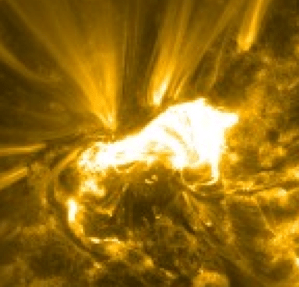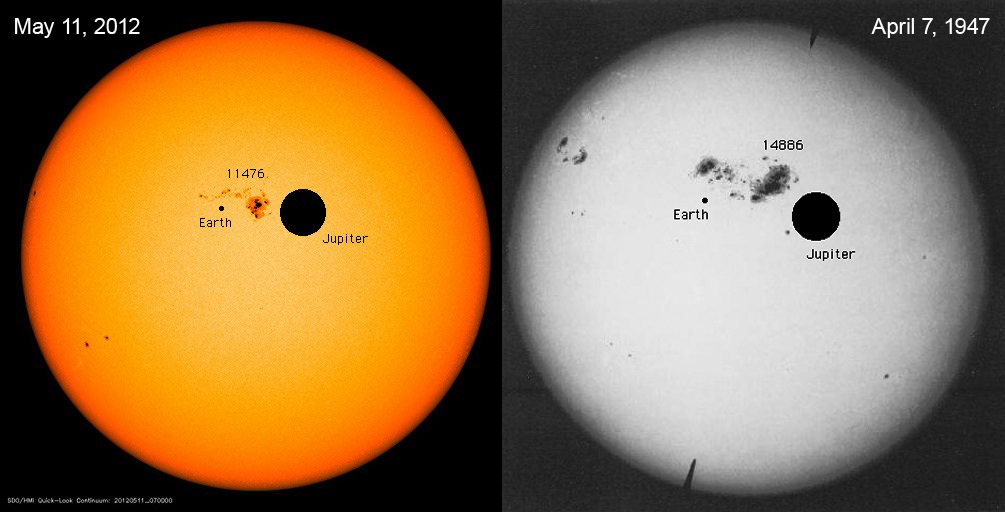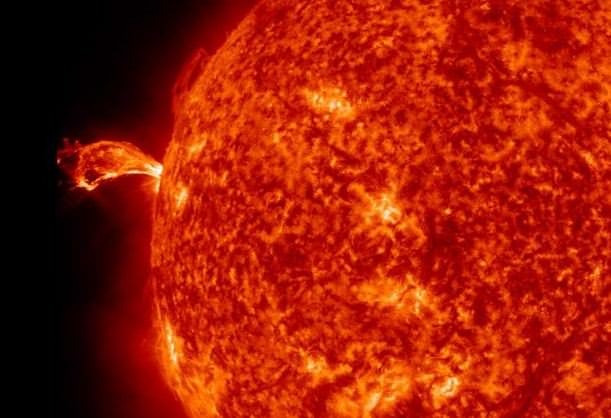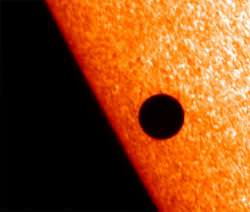As you read this, a huge cloud of charged solar particles is speeding toward our planet, a coronal mass ejection resulting from the X1.4-class flare that erupted from sunspot 1520 on July 12. The CME is expected to collide with Earth’s magnetic field on Saturday, potentially affecting satellite operations and tripping alarms on power grids, as well as boosting auroral activity. It’s on its way, and all we can do is wait. (Thank goodness for magnetospheres!)
Actually, the effects from the incoming CME aren’t expected to be anything particularly dramatic. NOAA is predicting a geomagnetic storm level raging from G2 to G4, which although ranges from “moderate” to “severe” a G2 (Kp = 6) is most likely, according to Dr. C. Alex Young from NASA’s Goddard Space Flight Center.
[Read: What Is a CME?]
“A G2 level storm can cause some power fluctuations that may set off some voltage alarms for power companies,” Dr. Young told Universe Today. “Damage to transformers is possible for longer events, but unlikely. Satellite companies may have to make some orbit corrections for their satellites, and at higher latitudes where there are aurora they can be some disruption of high frequency radio broadcasts.
“All in all the effects should be minor,” he concluded.
And this may not be the last we hear from 1520, either.
“Its complexity has decreased but it is still large and has a ‘delta’ configuration,” added Dr. Young, “when there is opposite polarity magnetic field of the umbra within the penumbra of the sunspot. This is an unstable configuration that is indicative of larger releases of energy, lots of flares — in particular M and X flares.”
Below is a computer model of the CME from Goddard Space Weather Center. Impact with Earth is expected on 7/14 at 10:20 UT (+-7 hrs), 6:20 am EDT.
Auroras may be visible at lower latitudes this weekend, so check the NOAA’s updated auroral oval map to see if visibility extends into your area over the next several nights. Hopefully aurora photographers around the world will be able to get some great photos of a summer sky show!
You can keep up with the latest news on solar activity on Dr. Young’s blog, The Sun Today. And of course, stay tuned to Universe Today for more updates on any noteworthy space weather!
The video below uses SDO AIA footage in 131(teal), 171(gold) and 335 (blue) angstrom wavelengths, and shows the X1.4 class flare erupted from the center of the sun on July 12, 2012 at 12:52 PM EDT. Each wavelength shows different temperature plasma in the sun’s atmosphere. 171 shows 600,000 Kelvin plasma, 335 shows 2.5 million Kelvin plasma, and 131 shows 10 million Kelvin plasma. The final shot is a composite of 171 and 335 angstrom footage.
Top image: illustration of a CME about to impact Earth’s magnetosphere (NASA). Model animation: NASA/GSFC. Video courtesy NASA/SDO and the AIA science team.
UPDATE: The CME took a bit longer to arrive than expected, but impact with Earth’s magnetic field was detected at around 1800 UT (11 a.m. PDT/2 p.m. EDT), activating a geomagnetic storm. According to SpaceWeather.com: At the moment, conditions appear favorable for auroras over high-latitude places such as Canada, Scandinavia, Antarctica and Siberia. It is too early to say whether the storm will intensify and bring auroras to middle latitudes as well.







